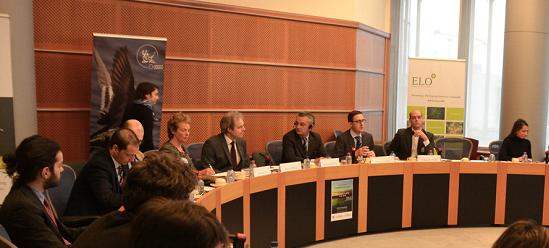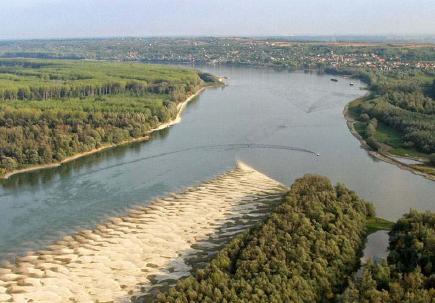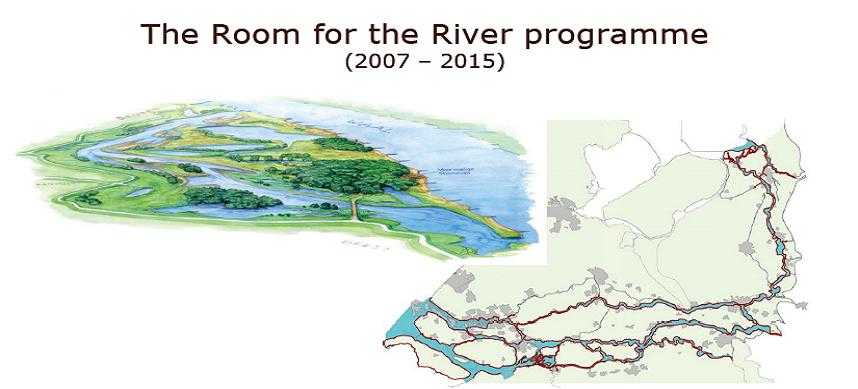Speech of Wetlands International's CEO Jane Madgwick on the Future of Europe's Rivers
Restoring Europe’s rivers for a cleaner, safer, richer environment
I’m here representing Wetlands International which is a global NGO that focuses on wetlands – conserving and restoring them for biodiversity and human well-being.
I’m going to focus on rivers and river restoration. Why focus on rivers? Rivers are like the arteries and veins of Europe and they give a good indication on the health of our land and water, as well as our own well-being. They are valued for a myriad of reasons, for example: drinking water, flood storage, fishing and other forms of recreation including hunting, and even agriculture and forestry in the floodplains. So the condition of our rivers gives a good indication on how well the integration of environmental, agriculture and other policies are working in Europe.
The growing threat to river ecosystems in Europe
If we look at the status of rivers in Europe, we see that there have been very good improvements in terms of water quality due to decades of improvements in pollution control. Unfortunately, the physical modification of rivers, river beds and channels, is continuing to happen due to the continuation of traditional engineering approaches, for example for flood management and navigation purposes. In fact around 30% of Europe’s rivers are now considered to be heavily modified; only a small fraction are in a natural condition. And in some European countries up to 70% of rivers are heavily modified. So this physical modification of rivers has led to problems in water quality, biodiversity, habitats and the overall ecological status of these waters. And this in turn has led to reduced economic development and livelihoods opportunities for people, and loss of quality of life.
The importance of river restoration
So the heart of the issue for rivers is to address this modification of the physical nature of river systems - hence my focus on river restoration. River restoration is defined in terms of restoring the natural functioning of rivers, allowing the natural processes to be restored and enabling the river system to gain some resilience and capacity to maintain all its values.
Actually in Europe, more than any other continent, there is a long history of river restoration and widespread activity. And there are many good examples of river restoration, where natural functions are being restored. This expertise is quite dispersed across Europe. EU funding has supported hundreds of river restoration projects. But most of these projects are single site – and often involve a single landowner and have a single issue focus. For example, river restoration for fisheries can involve altering a weir to allow fish passage; a small-scale actions with a singular focus. Many projects also have focused on biodiversity conservation, fewer address issues such as flood management and deal with multiple reaches of rivers.

The following EU Directives all have guidance that say wetland and river restoration is a good thing to do.
And there is quite a lot of guidance out there.
- Natura 2000 (Habitats and Birds Directives) – for the network to function well coherence between the sites is needed. River systems can provide that connectivity. Restoration can help that happen.
- Water Framework Directive (WFD) – provides guidance on restoring wetlands.
- Floods Directive – highlights very strongly the role of river wetland restoration in improving flood storage and reducing flood risk.
- EU 2020 Biodiversity Plan – actually sets out a restoration agenda, whilst calling for 15% restoration of habitats across Europe.
All of these Directives mention the need to restore river systems, in order to address pollution, floods and droughts. So rivers are a good candidate for combined efforts – to bring synergy from many policies and incentives. But in order to get real success in terms of sustainable, multiple benefits from river restoration, evidence shows you require a larger scale, multi-sectoral approach from the beginning.
 Case Study: The Danube River
Case Study: The Danube River
The gold standard river restoration example in Europe is along the Danube River, which occupies almost 9% of Europe and is the most international river system in the world. What is special about the Danube restoration programme is that from an early stage a basin-wide vision was put together which set out on a scientific basis where there was potential, for example, for floodplain restoration. There are 580,000 hectares of potentially restorable floodplain – and the cost-benefit analysis of that restoration is very positive. There’s progress moving towards that target. Also more than 200 barriers to migratory fish have been removed and another 600 or so are planned.
What’s also special is that in tackling the issues that continue such as riverbed erosion, dredging, dams and pollution, a real effort is made to connect benefitsfor nature with sustainable use in all its forms and real economic development opportunities are pursued and gained.
Case Study: Room for the River in the Netherlands
Another notable example is the Room for the River programme in the Netherlands, which also operates according to an integrated master plan. It’s interesting to note that the entire cabinet came together in the  Netherlands to make this programme happen. The primary driver is to reduce flood risk, but from the very beginning, it was recognized that a multi-sectoral, inter-sectoral activity was needed. A large part of the investment was in local stakeholder consultation in order to get a real mix of benefits for the economy, for nature, for the landscape and recreational opportunities, as well as an outcome that is resilient in terms of functions and processes. This has made it an expensive scheme, but it would be interesting to know whether it has paid off in terms of ecosystem services and benefits to the Netherlands society.
Netherlands to make this programme happen. The primary driver is to reduce flood risk, but from the very beginning, it was recognized that a multi-sectoral, inter-sectoral activity was needed. A large part of the investment was in local stakeholder consultation in order to get a real mix of benefits for the economy, for nature, for the landscape and recreational opportunities, as well as an outcome that is resilient in terms of functions and processes. This has made it an expensive scheme, but it would be interesting to know whether it has paid off in terms of ecosystem services and benefits to the Netherlands society.
While these are gold standard examples, the principles of an integrated landscape approach could apply to any river system, large or small.
Overcoming barriers to river restoration: RESTORE & REFORM
As I mentioned, there is a lot of technical expertise and experience on river restoration in Europe. The problem is that these projects and people are scattered across the continent and the expertise is dispersed and not well connected. There are two current EU-funded initiatives in which Wetlands International is involved, that are attempting to bring together the lessons learned from the various projects across the continent, to promote technical exchange and to identify best practices. RESTORE provides a web-based knowledge management tool which will bring together information in a way that decision-makers, planners and practitioners who are managers of rivers can access. This initiative is connecting people and knowledge across the continent and will be an ongoing platform for the future.
The other initiative is a research programme called REFORM. REFORMis aimed at improving our understanding of the ecological and socio-economic impacts of river modifications and the extent to which these modifications can be reversed or prevented. It will also set out protocols for better monitoring the biological response of river restoration. It will provide a sound science base and is bringing together tremendous expertise.
In the next couple of years RESTORE and REFORM will be excellent tools for all member states.
The need for policy incentives for river restoration
Turning to the policy incentives which support river restoration, I think it’s sad to see that river restoration as a topic is still talked about mostly in the domain of nature conservation and biodiversity, even though as I mentioned the relevant directives on water, flood management, even agriculture as we’ve heard, all mention the role of the restoration of natural habitats as a means to address their own sectoral objectives.
We are looking at the EU Blueprint 2012 review as a rare opportunity because we think that the WFD is a revolutionary directive. It is a river basin scale, visionary planning tool that sets targets which integrate water quality and ecological status. It is possible through the WFD approach to see a way to bring about an ecosystem services assessment which would promote the conservation of existing green infrastructure and restoration of ecosystems that can be utilized for new green infrastructure. These efforts could contribute significantly to help meet water-related policy targets in Europe.
So the theoretical basis is there. Sadly the guidance that is there so far is not enough to stimulate action. It is not yet an obligation to look at the value of natural infrastructure. Many tools are there but certainly they are rarely used. Targets are needed to stimulate action, and alongside the targets, incentives for maintaining ecosystem services where they exist and also encouraging investment in green infrastructure. These incentives could come through better targeted existing EU funds, but they could also come through initiating investments from the private sector, public-private partnerships and payment for ecosystem services for example. This would be completely in line with the ambitions that are being highlighted in the EU Green Infrastructure Strategy.
Wetlands International also sees the real need for greater use of Strategic Environmental Assessments to trigger new, ecosystem-based approaches to river management. Whilst I am mostly here talking about river restoration, it is sad to note that some of the rare crown jewels in terms of naturally flowing river stretches are still being degraded through infrastructure schemes that do not fully take into account the costs of those schemes in terms of the ecosystem service losses – and therefore impacts on a range of values. Requirements to use Strategic Environmental Assessments more broadly in relation to major infrastructure schemes or river modifications, would enable a full picture to be seen and alternatives schemes to be brought about.
Conclusion: connecting EU policies through river restoration
Wetlands International would put forward river restoration as a highly visible and also quite urgent activity in the European Union given the connectivity with all the EU policies and the fact that many of our rivers cannot be restored to good ecological status currently as they are so heavily modified. The technology and experience exist on the continent to help enable the development of water-related green infrastructure in river basins. We think the opportunities are now there to bring synergy between a number of EU Directives and strategies through river restoration. Of course it’s just one example of an ecological network, but it’s a very powerful one and one which is really in the hearts and minds of people across the continent.
Thank you.
5899